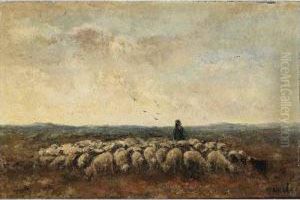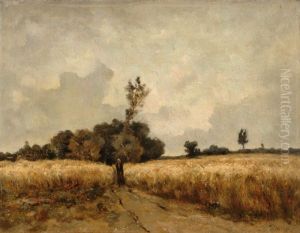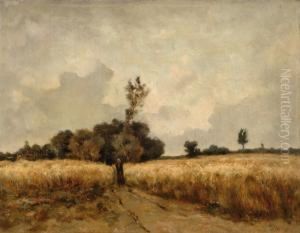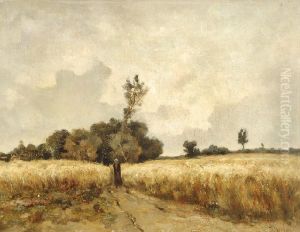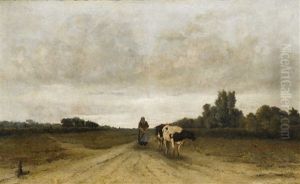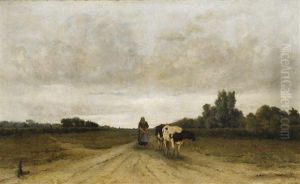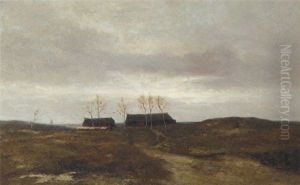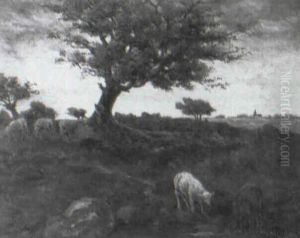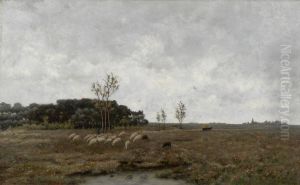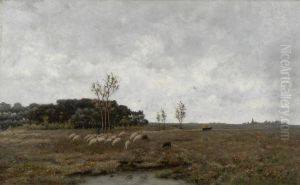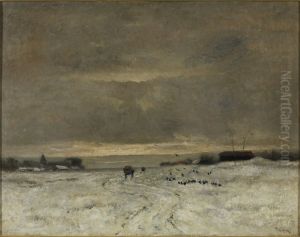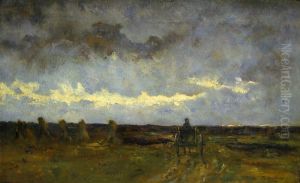Taco Mesdag Paintings
Taco Mesdag was a Dutch banker and painter born on September 21, 1829, in Groningen, Netherlands. He was part of a prominent art-loving family, as his brother, Hendrik Willem Mesdag, was also a well-known painter and art collector. Taco's journey into art was somewhat unconventional due to his initial career path in banking, which he pursued before fully dedicating himself to painting.
Mesdag began his career in the banking industry but had always shown an interest in art. It wasn't until later in life that he decided to turn his passion for painting into a full-time pursuit. His brother, Hendrik Willem, is often remembered for his marine paintings and for the Panorama Mesdag, a large panoramic painting that remains a tourist attraction in The Hague. The brothers shared their love of art, and their close relationship influenced Taco's decision to embrace the artist's life.
Taco Mesdag is particularly noted for his landscapes and scenes of the Dutch countryside. His style was influenced by the Hague School, a group of painters who lived and worked in The Hague during the 19th century. The Hague School artists were known for their realistic depictions of the Dutch landscape, marked by a subdued use of color and emphasis on mood, which is evident in Mesdag's work. While Taco never achieved the same level of fame as his brother, his contributions to the Dutch art scene were appreciated by his contemporaries.
Mesdag's paintings often reflected the serene and pastoral beauty of the Netherlands, capturing the tranquil scenes of rivers, fields, and rural life. He worked primarily in oils and was adept at conveying the changing light and atmosphere of his chosen landscapes. His works are characterized by a calm and harmonious quality that reflects his personal tranquility and contentment with his artistic pursuits.
Despite being overshadowed by his brother's success, Taco Mesdag was a respected artist in his own right. He exhibited his work alongside other Dutch painters of the time and was involved in the art community. After his death on March 4, 1902, in The Hague, his contributions to Dutch landscape painting continued to be recognized by art historians and collectors. Today, his works can be found in various Dutch museums, including the Groninger Museum in his hometown, allowing art enthusiasts to appreciate his quiet yet poignant artistic legacy.
